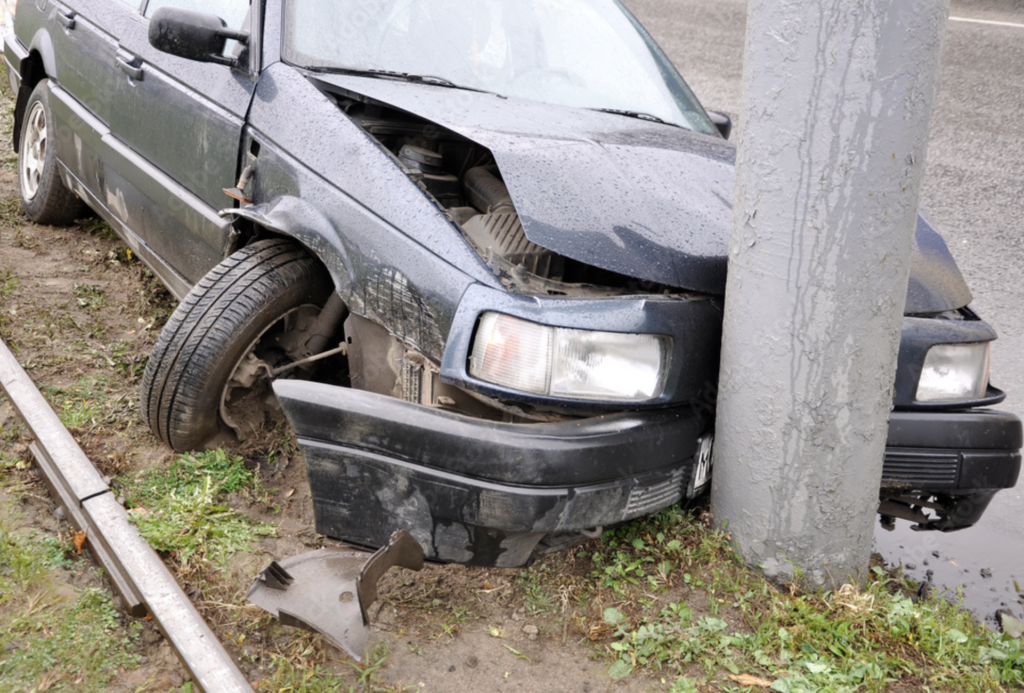Across the United States, one person died every 15 minutes and five people were injured every minute in vehicle accidents in 2019, according to the United States Department of Transportation. Each of those accidents cost the drivers and their insurance companies hundreds or even thousands of dollars. In some cases, there was only one driver and one vehicle involved. Accidents of this type are known as single vehicle accidents. While these may seem to be less dangerous or less expensive than collisions between vehicles, a single vehicle accident can be just as dangerous and expensive as one involving multiple vehicles. Single vehicle accidents can also be more frustrating because there is not another driver to hold responsible. If you have been involved in a single vehicle accident and are not sure what to do next, you may want to consult one of the experienced car accident lawyers with Hall & Lampros, LLP at (404) 876-8100 to learn more about your legal options. Our attorneys are industry recognized and ranked in the top one percent nationwide by the National Association of Distinguished Counsel.
What Does It Mean To Be in a Single Car Crash?
By definition, a single vehicle accident involves just one vehicle. Usually this term applies only to collisions where those in the primary vehicle are injured, but may also be used in accidents where innocent bystanders or bicyclists are injured as well. Damage to other people’s property, such as buildings or a parked car, are not usually considered single vehicle accidents except under certain circumstances. If the driver has collision and comprehensive coverage, their insurance may pay for the repairs to their vehicle. If the driver does not have that coverage, they will be responsible.
A single car crash may occur when:
The car drives off the road
The vehicle rolls
The car hits an animal
The vehicle collides with rocks, trees, guardrails, or other objects near or on the road

What Are the Four Main Causes of Accidents?
The four main causes of accidents are: driver error, vehicle part failure, environmental factors, and unknown. Regardless of the cause of your accident, Hall & Lampros, LLP may be able to assist you.
Driver Error
Driver error accounts for 94% of all accidents, according to the National Highway Traffic Safety Administration. These errors may include:
Delayed recognition: Not realizing there is a problem until it is too late due to inattention or distraction
Faulty decisions: Errors such as driving too fast for conditions, misjudging distances, or making incorrect assumptions about another driver’s actions
Vehicle
Vehicle problems account for approximately 2% of vehicle accidents. These problems usually take the form of a part failure. In many accidents, these are visible parts that are easily seen. Other internal vehicle parts may also play a role but are not always recognizable.
Environmental
Environmental factors cause approximately 2% of accidents. These factors can include things such as:
Obstructed views
Poor weather conditions such as snow, fog, rain, or ice
Signals or traffic signs that are not present or malfunctioning
Unknown
About another 2% of accidents are attributed to unknown causes. The label unknown is used when authorities are unable to determine the cause of the accident. This is rare, but may happen in accidents such as:
No driver in the vehicle or the driver is deceased and there are no other occupants
No witnesses
An animal was hit but what kind of animal is unknown
There is no physical evidence or the evidence is not clear enough
What Factors Contribute to Single Vehicle Crashes?
While vehicle part failure and environmental factors may contribute to single vehicle accidents, most are due to something the driver is or is not doing. In many cases, these accidents may also result in a ticket or other legal consequences for the driver. According to Ride Safe Georgia Consumer Safety Information, these can include:
Driving under the influence: Operating a vehicle while taking alcohol, illegal substances, or even prescription medications that can slow reflexes, negatively influence a driver’s decisions, and impact their ability to maintain vehicle control
Dangerous driving: Tailgating, speeding, or reckless or aggressive driving
Distracted driving: Cell phones, GPS, loud passengers, food or drink, smoking or vaping, unsecured pets, changing the radio station, or applying makeup
Inexperienced driving: Inability to recognize dangerous situations or failing respond appropriately to such recognition
Failure to obey road rules: Ignoring stop signs, running red lights, speeding, illegal turns, driving on the wrong side of the road, unsafe passing
Which Vehicle Parts Contribute the Most to Vehicle Crashes?
While vehicle part failure is not responsible for many accidents, this unfortunate circumstance does sometimes occur. If a part fails and causes a single vehicle accident, the vehicle or part manufacturer may be liable. The parts that fail and cause single vehicle accidents most often include:
Tires or wheels (35%)
Brakes (22%)
Steering/suspension/transmission/engine: 2%
Other or unknown: 40%
Have You Been Involved in a Single Vehicle Accident?
Single vehicle accidents may seem scary, but you do not have to deal with them alone. An experienced car accident attorney may be able to assist with investigating whether a third party such as a vehicle or part manufacturer or another driver may be partially liable, or help you to negotiate with an insurance company for repair costs and other expenses. If you or a loved one has been in a single vehicle accident, the experienced car accident attorneys with Hall & Lampros, LLP may be able to help you understand your legal options. Contact our offices today at (404) 876-8100 to schedule your confidential consultation.

